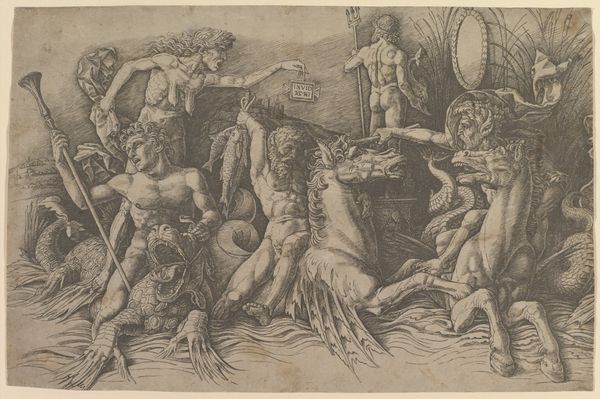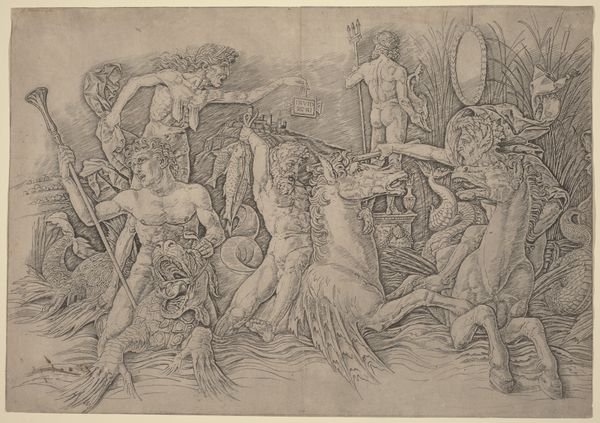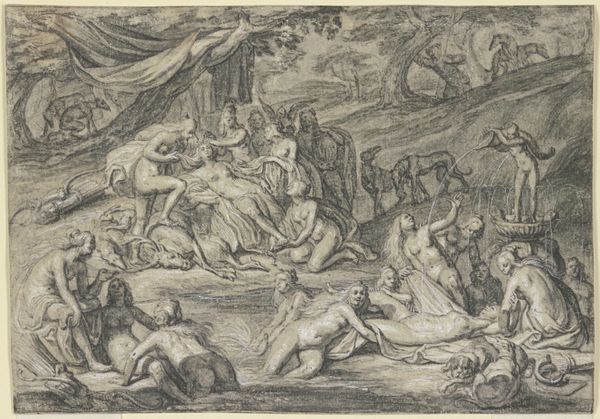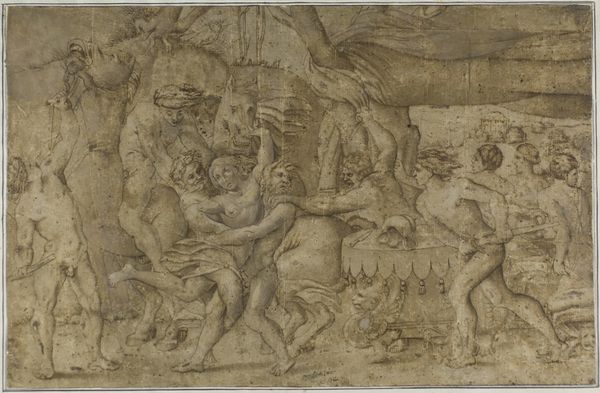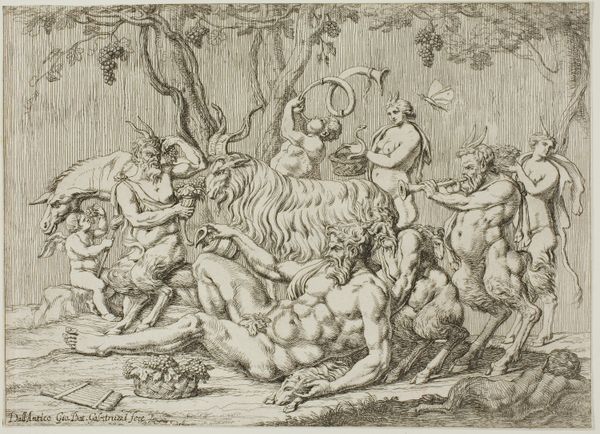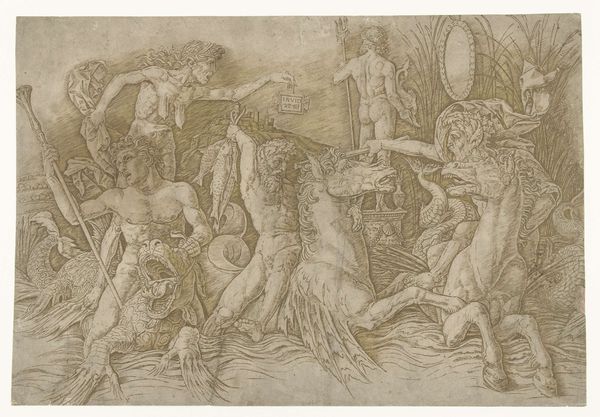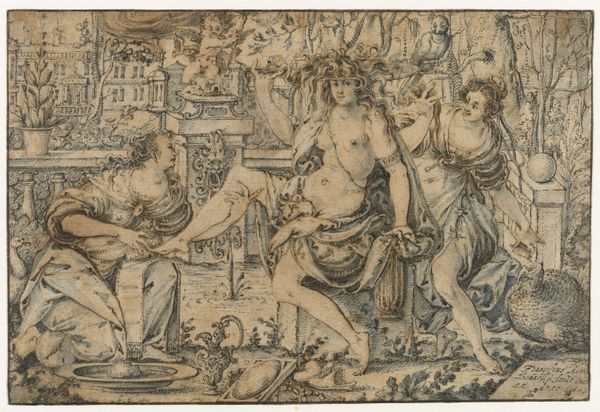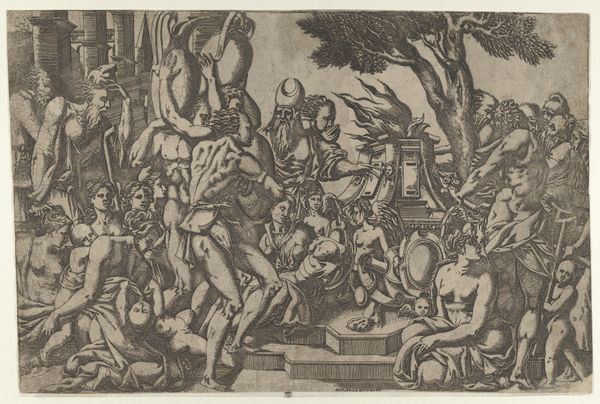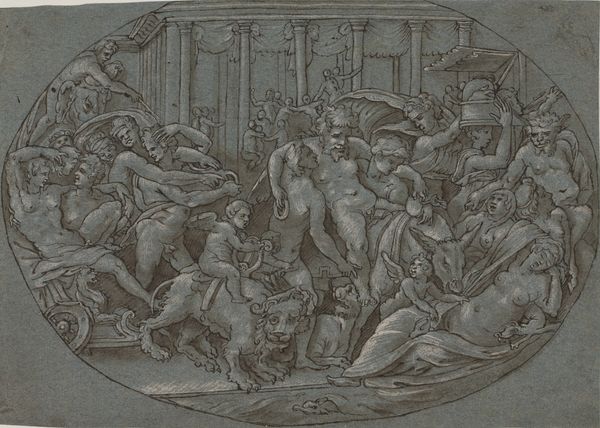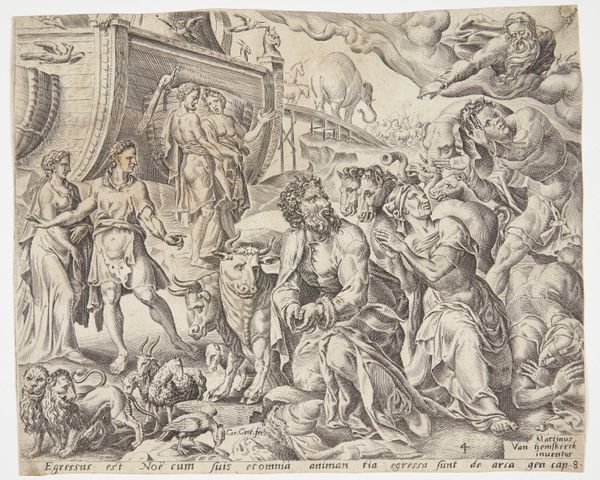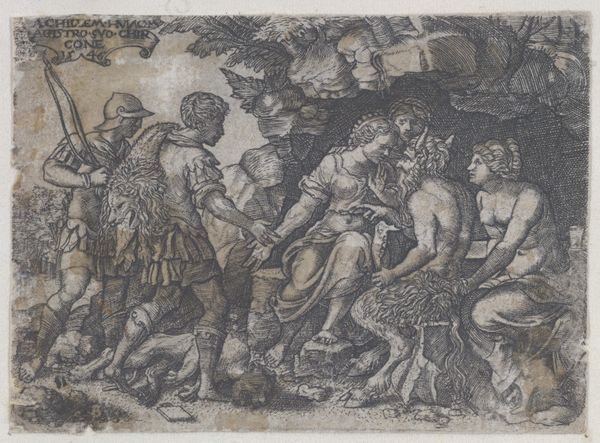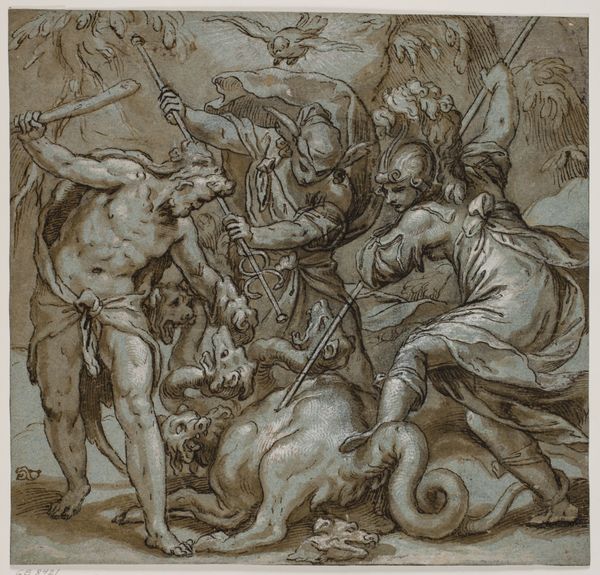![Battle of the Sea Gods [left half] by Andrea Mantegna](/_next/image?url=https%3A%2F%2Fd2w8kbdekdi1gv.cloudfront.net%2FeyJidWNrZXQiOiAiYXJ0ZXJhLWltYWdlcy1idWNrZXQiLCAia2V5IjogImFydHdvcmtzLzQ3YTIzYWYyLTdkMTctNDMzMC04YWE2LTU3MmI5N2U4OTFlMC80N2EyM2FmMi03ZDE3LTQzMzAtOGFhNi01NzJiOTdlODkxZTBfZnVsbC5qcGciLCAiZWRpdHMiOiB7InJlc2l6ZSI6IHsid2lkdGgiOiAxOTIwLCAiaGVpZ2h0IjogMTkyMCwgImZpdCI6ICJpbnNpZGUifX19&w=3840&q=75)
drawing, print, etching, ink, engraving
#
drawing
#
ink drawing
# print
#
etching
#
landscape
#
figuration
#
11_renaissance
#
ink
#
ancient-mediterranean
#
history-painting
#
italian-renaissance
#
engraving
Dimensions: sheet: 27 x 40.4 cm (10 5/8 x 15 7/8 in.)
Copyright: National Gallery of Art: CC0 1.0
Editor: Looking at this flurry of churning figures, my immediate response is one of controlled chaos, as though frozen in a violent narrative. Curator: Indeed. What we're seeing is "Battle of the Sea Gods [left half]" by Andrea Mantegna, an engraving executed before 1481. It is a complex and vigorous display rendered with a dense network of etched lines. Editor: Etching, precisely, adds an important textural layer to this drama. Tell me more about the labour behind it. Curator: The Italian Renaissance saw engraving elevated from mere craft to an intellectual pursuit. The process involves meticulous preparation of the metal plate, precise carving, and an understanding of chemical reactions to achieve desired depths and intensities. Mantegna's mastery here elevates etching to a vehicle for intense expressiveness. Editor: It does remind me of monumental frescoes, distilled into a smaller, repeatable format. I am thinking about all that human effort to produce it, though, the production and circulation, the knowledge sharing and artisanal practices... Curator: Undoubtedly, this print is evidence of evolving values placed on skilled work within the Renaissance workshop. Looking closer, the figures strike me as embodying ideals rooted in classical sculpture and mythology. Consider the sinuous musculature of these figures, their dynamic poses – each is positioned to direct the eye through a balanced yet agitated composition. The whole seems designed to convey potent and immediate narratives, like the triumph of virtue. Editor: I can see that from a formal perspective; it definitely echoes Renaissance values in human form. But I also notice that sea creatures have as much compositional space and significance as these idealized men. Curator: That tension is essential, offering dynamism. The sea serpents echo the forms of the fighting tritons, thus connecting and contrasting nature and idealized humans, inviting layered interpretation. Editor: In the end, "Battle of the Sea Gods" highlights Renaissance ingenuity. With so much craft behind it, it seems this particular form also allows for democratization and popularization of artistic narratives for years to come. Curator: Yes. Mantegna has provided a window onto the rich tapestry of cultural ambition, condensed into an exceptionally wrought object of its age.
Comments
No comments
Be the first to comment and join the conversation on the ultimate creative platform.
